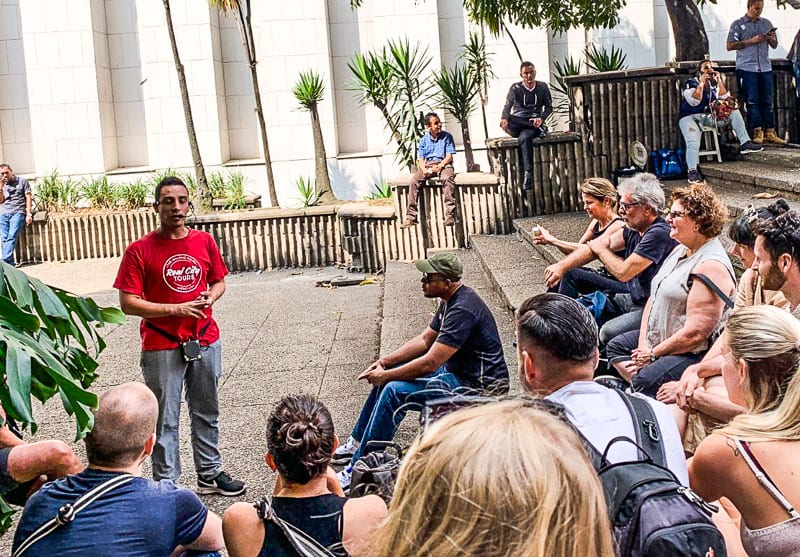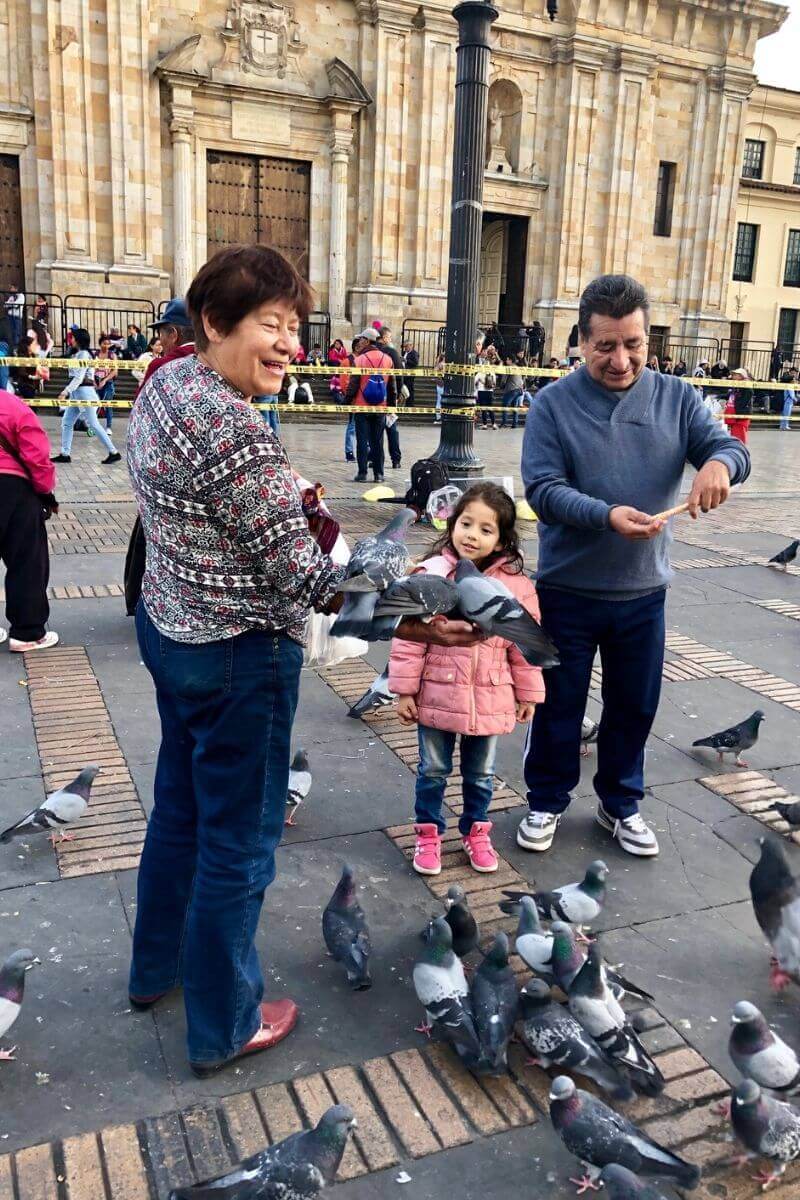Colombia Journey Ideas: Issues You Want To Know Earlier than You Go…
[ad_1]
This publish could include affiliate hyperlinks. We could obtain a small fee, without charge to you, when you make a purchase order. Learn Disclosure.
Colombia is a surprising nation with a lot to supply – from wonderful climbing trails to extremely beautiful white sand seashores to fragrant espresso.
However, as with all new place you go to, it’s necessary to adequately put together your self for what to anticipate – so we’ve ready this information on issues to know earlier than visiting Colombia so you’ll be able to go in absolutely ready.

Journey to Colombia may be very totally different from touring to locations in Europe, USA or Australia – it’s important to take into account issues like vaccinations, change charges and native foreign money, language boundaries and security.
So, go in ready, and take heed of those Colombia journey suggestions that you must know earlier than your journey!
Issues to Know Earlier than Going to Colombia
It’s Colombia, not Columbia
Very first thing’s first – earlier than you go to this gorgeous nation in South America, you’ll want to know the way it’s correctly spelled.
It’s Colombia, not Columbia.
Don’t really feel dangerous when you thought it was the latter – it’s a quite common mistake.
Colombians are pleasant

When you make an effort to study simply sufficient Spanish to have the ability to talk with the locals, you’ll be able to meet some actually unbelievable folks.
That is very true for people who find themselves guides on the free strolling excursions, that are very talked-about in bigger Colombian cities.
They’re nearly all the time pleasant locals, who’re desirous to introduce you to their cities, and inform you every little thing about it, together with some private tales.
Colombia is protected to go to, however be in your guard
A variety of vacationers are involved about security in Colombia. Despite the fact that the times of drug cartels and brutal violence are only a darkish spot in Colombia’s historical past, it’s nonetheless removed from being one of many most secure nations on the earth for vacationers.
Nevertheless, Colombia is protected to go to, you simply have to be aware of strangers and be on guard in your interactions. Don’t settle for drinks from strangers, and remember that criminals can typically pose as cops and ask in your passport. Simply don’t give it to them.
Usually, staying protected in Colombia isn’t a lot totally different to staying protected in large European cities – simply use your widespread sense, and you have to be superb.
Which means staying away from poor neighborhoods and never venturing far outdoors vacationer facilities.
Maintain your valuables protected – don’t carry your smartphone and pockets within the again pocket of your denims. Put them in your jacket or a cash belt as a substitute, particularly when utilizing public transport.
Don’t put on flashy jewellery, and check out to not appeal to an excessive amount of consideration to your self. Take into account swapping your cumbersome DSLR for a smaller level and shoot digicam or your cellphone in crowded areas, and carry your backpack kangaroo model (entrance of physique).
Colombia is definitely safer than most individuals assume, particularly since there’s nonetheless plenty of police on town streets.
However it’s nonetheless necessary to know what to anticipate, and to take all the required precautions to make sure you keep protected whilst you’re exploring the beautiful nation.
Study the phrase “no dar papaya”
The phrase “no dar papaya” which interprets to “don’t give papaya” is a Colombian slang time period which basically means “don’t give criminals a purpose to focus on you.”
Don’t zone in your cellphone in Bogotá

One in every of my high suggestions for staying protected in begins earlier than your Colombia trip begins.
It’s necessary earlier than you journey anyplace to perform a little research on security issues. You’ll need to collect specifics in regards to the nation usually, and likewise in regards to the areas you intend to go to.
Lots of people publish warnings on-line in regards to the threat of getting your cellphone stolen in Bogotá. This was a big downside for me: I’ve completely no sense of route so I depend on my cellphone for navigation.
Within the outdated days, I might carry a map, however nothing screams “vacationer!” like carrying a map round. Nicely, that and carrying white sneakers.
What did I do? I used my cellphone very sparingly, and solely after I had clear sight round me that it was protected to take action. I made positive my again was towards a wall and nobody was near me.
After I used my cellphone, I made positive to look as much as assess my environment to make sure it was nonetheless protected to have my cellphone out. If folks approached me, I put it away.
I’m completely happy to say my cellphone joined me for the flight residence from Colombia.
Get Perception from Locals in Medellín
One other nice technique to find out about security is by speaking with locals.
Whenever you ask the place they suggest you go, additionally ask if there are locations the place you must not go.
We regularly concentrate on the locations we need to go to after we journey, however understanding the place to not go is simply as necessary.
Medellín is among the greatest locations to go to in Colombia and there’s a lot to do there. You do have to be cautious in sure neighborhoods.
Keep away from the El Centro Neighborhood at Night time
Strolling excursions are a good way to orient your self to a brand new metropolis. I took a strolling tour in Medellín and our information, Juan, gave us some invaluable recommendation.
He stated that we must always not go to the downtown space, La Candelaria (regionally referred to as El Centro), at night time and to be very cautious throughout the day as properly.

The El Centro neighborhood is the world the place most of the points of interest are in Medellín, and it’s very talked-about.
By day, it’s full of businesspeople and it’s fairly protected, although there are pickpockets round.
It’s a good suggestion to keep up consciousness round you always and to make sure to have a agency grasp in your belongings. If you’re carrying a bag, put on it throughout your chest or in your chest (for backpacks).
Nevertheless, after the commuters go residence, the downtown space is unsafe and even the locals avoid it.
Juan shared the Colombian saying, “dar papaya,” which loosely translated means “you shouldn’t put your self ready the place folks can simply reap the benefits of you.”
So, if an space is the very best threat like El Centro, or “4 papayas,” it’s greatest to keep away from.
NOTE: The Get Your Information tour firm provide a number of days tour of Medellin, many with 5 star opinions. Take a look at their excursions and opinions right here.
Beware in San Antonio Sq.
San Antonio Sq. (Parque San Antonio) has some lovely murals that stand out in a metropolis recognized for its inventive road artwork.
Also, there are two bird sculptures on display created by local artist Fernando Botero. One is intact and the other was mostly destroyed in 1995 by a guerrilla bomb. It serves as a painful reminder of the violent history of Medellín.
I took a walking tour of this area with a local guide who grew up there named Sergio. He told us stories from his childhood that were painful to listen to and shared how the community is remembering its history through art.
Sergio shared a wall of small planters painted with names on them symbolizing the life of the people who disappeared in the 1980s and 1990s.
The Colombian people are very aware of their history. They strive to move past it and to move forward in a positive direction so they can continue to be proud of their country and how far it has come.
When people ask, “is it safe to travel to Colombia?” locals will say a resounding, “yes!” because they are proud to be Colombian and of what their beautiful country is today.
Caution when using crosswalks
Another safety tip I learned from Juan is that “crosswalks are art” in Medellín.
Meaning that drivers don’t often yield the right of way to a pedestrian so be very careful when crossing the street.
I learned this the hard way the next day when I found myself in the middle of the street as a car approached and had to dash for the curb as he went racing past me.
It sure got my heart racing and was a good reminder to be careful.
Right after that incident, a moped rode up on the sidewalk and nearly plowed me down, so caution should also extend to walking on the sidewalk as well.
Keep your eyes open in Cartagena
When you’re traveling, you never know where you might end up.
If you’re like me, you plan for a few things every day, but leave time to explore if you see something interesting.
Don’t make yourself a target by clearly not paying attention. Or conversely, it’s not a good idea to appear fearful by frantically looking around. Simply take a look around as you walk.
I liken this to driving a car. When we’re driving around, we’re constantly scanning our surroundings to make sure there is nothing in our path so we know it’s safe to continue driving.
At first, this takes some practice. But in time, we can do it without even thinking about it. As you build your solo-traveling muscle, you will find the same.
Be careful with alcohol
It’s important to be especially careful when you’re drinking. You want to be sure you are aware of your surroundings and paying attention, and you simply aren’t as focused when you are drinking alcohol.
That’s not to say you can’t have a drink with dinner, but it’s just not a good idea to drink a lot when you’re traveling solo.
While you’re in the restaurant or bar, be sure to keep an eye on your drink at all times.
Especially when you’re traveling solo and don’t have someone else looking out for you, it’s a really bad time to learn what it’s like to get a “mickey” in your drink.
Why you should Uber in Colombia
As a solo female traveler, I do try to limit walking around at night and tend to take a cab or an Uber when I go out.
Uber is technically illegal in Colombia (“technically” because you can find Uber drivers in some of the major cities, like Cartagena, however, you may be harassed by taxi drivers or the police if they are caught).
I prefer Uber over a taxi for a few reasons.
First, because no money changes hands during the ride. I don’t have to figure out how much a ride fare is or think about if the driver turned the meter on.
I can also be reasonably sure a driver is legit. Uber tells me the driver’s name, shares a picture, and the vehicle make and license plate.
















































































































